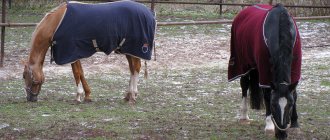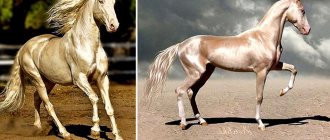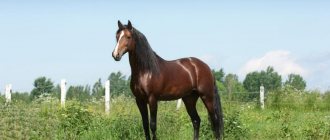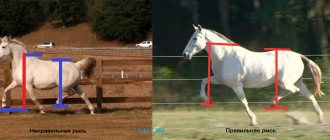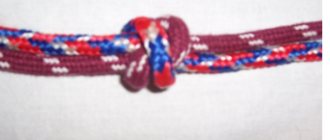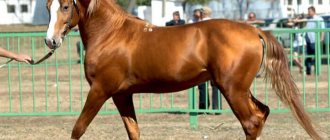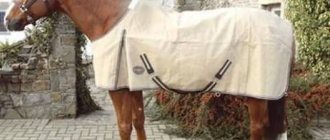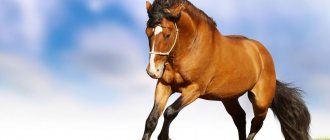Horseback riding. Landing and balance exercises
The first thing a good equestrian coach teaches his students is seating. Flexible and independent landing is the basis on which safety, control efficiency, and success in mastering any elements depend. To “set” the landing, a good trainer uses many exercises, including balance. Why?
Proper fit is a flexible design, not a wooden mannequin pose. Therefore, monotonous driving in a circle in an attempt to firmly fix the desired picture is completely useless. This way the rider will only learn to imitate the landing. The picture will be similar to the ideal, but the muscles are tight, and there will be no talk of any flexibility, as well as the rider’s real understanding of the mechanics of the horse’s movement and the ability to follow them. Therefore, the only way to a truly correct fit is gymnastics and balance exercises.
Landing exercises
So, let's look at several types of balance and landing exercises:
Gymnastics in the saddle
A good rider must develop his body and make it balanced. This applies not only to beginners, but also to the most experienced riders. The range of gymnastic exercises depends on the age, level of physical fitness and experience of the rider. For example, children are more flexible than adults, but they are less able to perform exercises that require precise control. Therefore, adults are given more stretching exercises (swinging arms/legs, body turns, bending down from the toe of the boot and back to the horse’s croup, breathing exercises, etc.), and children are given more exercises on the accuracy of following commands. The pinnacle of gymnastics in the saddle is vaulting. It can be practiced from the moment the rider learns to sit at a trot. There are also gymnastic exercises for individual muscle groups. For example, a set of exercises to improve the position of the head or leg. You can read more about them in our equestrian magazine EquineManagement.ru
Lightweight fit
The lightweight seating position does a great job of helping the rider find balance. It must be practiced at canter, trot and walk. And starting from the very first months of learning to ride. A lighter landing is primarily achieved by moving the hips forward and upward, and not by straightening the legs. Exercises for a light landing can be simple (for example, a few steps on a light landing, a few on a normal landing) or complex (for example, going through a pattern of various tasks on a light landing, changing gaits). You can read more about how to learn to ride on a lightweight seat in a specialized article in our equestrian magazine.
Riding without stirrups
Exercises without stirrups are designed to improve your posture. They help develop the desired balance and make the leg position deeper and stronger. However, it is important to understand that riding without stirrups is intended specifically for working on balance, and not for pumping up leg muscles. Quality comes first, and overworked muscles will not allow the rider to sit relaxed and at ease.
Transitions between landings
Practicing the transitions between easy seat and practice seat at walk, trot and canter helps to gain a sense of balance. This helps to understand that it is dynamic and tied to the movement of the horse, rather than holding the body in one position. Transitions at the trot between learned, walking and easy seated positions are also excellent exercise. A simple option is transitions to voltaic or straight lines. Difficult - during the performance of various manege figures.
These are just basic balance and landing exercises. The more experienced the rider, the more complex exercises can be used to work on the seat. For example, jumping without a rein, gymnastics at a gallop, transitions within gaits with a light landing, and so on. The ability to control a horse with weight, and weight is the basis of control, comes only with correct seating. To learn how to ride a horse, positioning and balance exercises are essential. Find a good trainer and enjoy horse riding! Text: magazine about horses and equestrian sports EquineManagement.ru
Common mistakes when riding
Inexperienced riders often make mistakes when learning to ride. The most common are:
- Fear and tension. Riding a horse is a pleasant process. You need to relax and calm down, because if the animal senses the rider’s uncertainty, it can gallop.
- Riding without gear or equipment. Horseback riding without a helmet is unacceptable; it can cost the life of an inexperienced rider.
- Winding the reins around the hands. This is very dangerous - if the horse suddenly bolts, you can break your arms, and if you fall out of the saddle, you can hang and get hit by the hooves.
Is training necessary at all?
Any pet requires attention and care from the owner.
It is competent training and training that allows you to establish contact with the animal and bring it to obedience. Besides, when you have such a smart pet, it would be a shame not to take full advantage of his physical and mental abilities.
Of course, the training process is not an easy task and requires from the breeder not only certain skills and knowledge, but also a lot of patience and time. However, if you spare no effort at this stage, the results will be a devoted and intelligent friend who understands you almost without words!
Regular training, carried out according to a specific system, is also useful for the following reasons:
- training allows you to develop the physical characteristics of the horse. These initially strong animals, with a competent approach to physical activity, are capable of achieving incredible physical condition. Trained horses are much faster, stronger, more agile and resilient than their untrained counterparts. In addition, experts note that animals with whom they regularly exercise get sick much less often than their sedentary counterparts, and generally have better immunity;
- training helps to establish psychological contact between pet and owner. For many horse breeders, this factor becomes decisive. The thing is that many of us, when approaching an animal larger than ourselves, experience psychological discomfort, apprehension or even fear. Regular exercise over an extended period of time helps relieve feelings of insecurity and allows you to feel some spiritual unity with your animal.
More on the topic:
Does a white horse exist?
If you do everything correctly and according to a pre-planned program, then in a year you and your horse will understand each other without words. Only in cinema does a dashing horseman grab the first horse he comes across and, jumping into the saddle, instantly tame it. In reality, this takes much more time and labor.
The sensitivity of a horse allows it to accurately determine a person’s attitude towards itself, and it also responds to aggression with aggression, and on its part this is very dangerous. Even and friendly participation, combined with an unyielding demand for obedience - these are the qualities that a good horse owner needs.
- With the help of competent training, you can significantly improve the quality characteristics of not only a particular horse, but also the entire breed as a whole. Professional training is mandatory for all breeding and thoroughbred horses. Over time, acquired skills are inherited and consolidated, therefore, the purer the breed of an animal, the easier and faster it can be trained;
- Well, and most importantly. Without a certain training cycle, it is impossible to ride a horse in principle - neither on horseback nor in harness. The animal must first be accustomed to the harness or harness, as well as to the rider or cart. Teaching these freedom-loving pets to wear ammunition and obey someone is quite difficult.
We suggest you read: Hoof diseases in horses, diagnosis and treatment
This intelligent creature of nature can be taught almost anything (within reasonable limits, of course). Circus horses and horses performing in dressage show truly miracles of coordination and obedience. However, teaching an animal everything at once is inappropriate.
Already at the time of purchase, every owner must clearly understand why he needs a horse and how he plans to use it in the future. In addition, if you purchase an adult animal, it has already been trained at a stud farm or breeding farm. This preliminary training is called factory training.
The essence of factory training is that after weaning from their mother, foals immediately begin to be trained using various group techniques. This is necessary so that the young animals develop correctly physically, get used to constant contact with people, are not afraid of them, do not show aggression, and are stable from a psychological point of view.
As a rule, horses end up in private hands or in equestrian clubs and schools at the age of one and a half to two years. It is at this time that their individual training begins, which depends on their intended use.
| № | Helpful information |
| 1 | training of trotting horses. The essence of this technique lies in exercises in which there is a constant alternation of gaits such as walk and trot, and at different speeds, which are called trot, swing and swing. The beginning and end of the workout is walking. Trotting horses are tested at hippodromes, using special racing harness and a special type of carriage called a rocking chair. |
More on the topic:
What types of racing horses are there?
The main goal of this training direction is to consolidate the trot as the main gait, identify the speed abilities of each individual individual and prepare it for professional competitions - racing.
- racing training. The main goal is the maximum development of qualities such as agility and endurance. During one training, the animal moves with all three main gaits - walk, trot and gallop. The main thing is to achieve a stable and fast gallop from the horse, which experts call a quarry.
Usually the animal is allowed into the quarry at the end of the training, and the distance of the training run with this gait ranges from five hundred meters to two kilometers. Basically, training takes place all the time from October to April, since in the period from May to September, as a rule, various competitions are held for which the horses are prepared.
- training an animal for a long run. Long distance racing is a very serious test for both man and horse. Only the strongest, most resilient and healthy horses are allowed to participate in such competitions. Most often, horses are selected for such races based on their results in short distance races.
We suggest you familiarize yourself with: Kalamoicht maintenance in an aquarium
If an animal takes prizes in a sprint, beating its rivals, this means that it has a healthy heart and everything is in order with its respiratory organs. If a horse always comes last during short races and feels very tired, then there is simply nothing for him to do at longer distances.
The main goal of training after preliminary selection is the development of so-called speed endurance, or, in other words, the ability to maintain a high running pace for a long time. Basically, training for long races consists of constant walking and trotting exercises. For example, at each training session the horse should move only at a walk for two and a half hours, preferably over rough terrain.
- jumping training. There is such an equestrian sports discipline as show jumping. Its essence lies in the fact that a horse with a rider on its back must overcome obstacles of both different heights and different widths in a limited space.
In addition, jumping ability is important in hurdle racing, steeplechase (horse racing with fixed obstacles, both high and wide) and in eventing (one type of competition - three disciplines at once: dressage (“horse ballet”), show jumping and steeplechase). The training is aimed at developing jumping ability, not only in height, but also in length.
I usually start with obstacles lying on the ground (poles or logs) that the horse steps over with a person on his back. Gradually, the height and width are increased, and the horse is forced not to step over, but to jump over obstacles artificially created at a distance.
- dressage The goal of training in this direction is to teach the animal to perform movements that are unnatural for it in real life (jumping in place, crossing legs while walking, pirouettes, and so on). There are many methods, and we will not describe them. Let's just say that “horse ballet,” as this equestrian sport discipline is often called, requires the highest level of mutual understanding between horse and rider;
- training for heavy breeds. The main goal is to maximize the development of pulling force and pulling endurance of a draft horse. Horses begin to be trained with light weights, constantly increasing the weight of the load over time. In addition, during training they also change the speed of movement - they start with a walk, then switch to a trot. Training with the maximum allowable weight can be done no more than once or twice a week. Draft horses begin to be trained at the age of four, and not earlier.
More on the topic:
The uniqueness of the Friesian horse
We suggest you read: Meningoencephalitis in cats is a disease of the nervous system.
For example, an approximate sequence of exercises for one training session for a foal aged one and a half years could be as follows:
- Step – from eight to ten minutes;
- Trot – from 15 to 25 minutes;
- Step again - for five minutes;
- Canter race (a type of gait similar to a gallop, but slower) – 1,000 -1,400 meters;
- Step - from twenty minutes to half an hour.
In total, one horse training session takes about an hour.
https://artofhorsemanship.ru
Gymnastics (Greek gymnastike, from gymnazo - I train, exercise) is a system of specially selected physical exercises used to improve health, improve motor abilities, strength, agility, and endurance.
The term “gymnasting” has firmly entered the lexicon of horse dressage fans, especially those who prefer its classic versions.
Did you know that the System of gymnastic exercises, which I used as the basis for the physical education of my horses, is not something new and original.
This is just a well-forgotten old thing! For example, the circle was mentioned by Xenophon (430 BC).
Illustration from the book of Xenophon
In ancient times, horses were the fighting companions of warriors. In order for a horse to become an excellent partner, it had to be perfectly ridden, light and maneuverable. Exercises such as pirouette, terrestrial, capriole were absolutely utilitarian elements in those days, and not just spectacular figures.
Ter-a-ter
During the Renaissance and Baroque, the Art of Horsemanship became popular. A superbly trained horse was the privilege of the upper classes, mostly of royal blood. The dressage traditions of war horses of the past were continued by masters of the time, such as Antoine Pluvinel (16th century) and François R. de La Guerinière (18th century). By the way, you can download the book “The Riding School” by F. de La Guerinière here.
Antoine de Pluvinel Francois Robichon de La Guerinière
In the 19th century, prominent figures in horse dressage were François Bauchet and Gustav Steinbrecht.
Francois Beaucher
Gustav Steinbrecht
By the way , Gustav Steinbrecht was very critical of Francois Bauchet and did not recognize his methods of dressage horses, considering him a stunt circus performer and not a master of horse riding (yes, Bauchet really worked in a circus).
In modern times , the traditions of François Baucher are continued, for example, by Philipp Karl, and the traditions of the masters of the Baroque times and Gustav Steinbrecht are continued by Bent Branderup.
Philip Karl
Bent Branderup
The Dane Bent Branderup , the founder of the School of Academic Art of Riding by Bent Branderup, made the academic system of horse gymnastics very popular in Western Europe.
Bent Branderup gives open lessons quite often at his stable in Denmark.
Visiting Bent Branderup with Antonina Shevchenko
numerous students continue the tradition of the academic school and, in various forms, pass on the system of gymnastic exercises to more and more new connoisseurs of beauty.
Some of them, for example, Maraika de Jong, have made this gymnastic system the basis of their methods and are actively popularizing it on the Internet, giving it their original name (straightening method). You may be interested to know that it was from Maraika that I gained knowledge about gymnastic training of horses, studied with her personally for several years, and participated in seminars and master classes.
Maraika de Jong
Maraika de Jong, I, Romanesque (2012)
is not the only one who creates educational programs. A training program from the German Marius Schneider is expected soon.
Marius Schneider (with horse), Bent Branderup (far left)
Another student of Bent Branderup, Griethe Hackvoort, combines academic school with working dressage. Watch her wonderful video where she works with her horse Bongo on the cordeo.
Both practical military antiquities, and the sophisticated nobility of the Renaissance, and the masters of the 19th century, and modern followers of the classical school, strived and strive to “put the horse on its hindquarters.”
This "strange" term means rebalancing the horse so that it carries its weight and the weight of the rider with its hind legs. The hind legs had to become very strong and flexible, and for this the Masters used Gymnastics.
We cannot give a horse dumbbells to develop the strength and flexibility of his muscles.
But we can use her own body as a barbell, dumbbell or kettlebell. This is achieved in lateral (lateral movements) and piaffe movements .
In lateral flexion, required when performing lateral movements, the horse's body weight is placed in the direction of the movement of his hind legs. The hind legs are brought under the body, take on the weight, bend and pump up.
the shoulder-in exercise, we train the flexion ability and strength of the inside hind leg.
In the traverse, renverse, and half pass , we train the flexion ability and strength of the outer hind leg.
In the pirouette and piaffe we train the flexion and strength of both hind legs.
Bend both hind legs in piaffe
Gymnastics can and should be used to improve the physical and even psychological condition of any horse.
No matter what stage you end up getting to - even if you just teach your horse to walk in a balanced circle and in a straight line - you will be of great help to your horse!
Make gymnastics a constant companion in your training with your horse and you will very soon notice positive changes in both your horse’s movement style, his agility and controllability, and in his behavior and attitude towards training.
Read more about the system of gymnastic exercises HERE.
